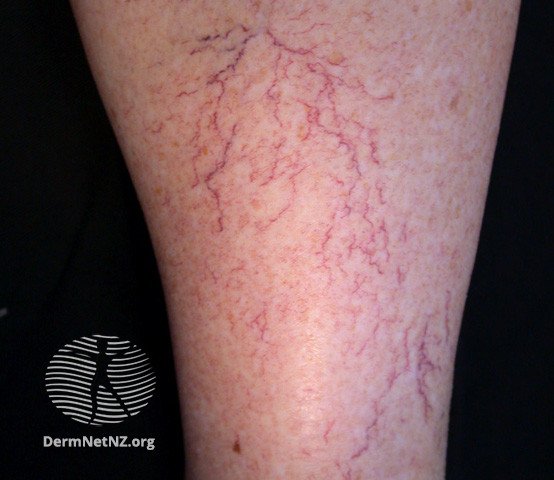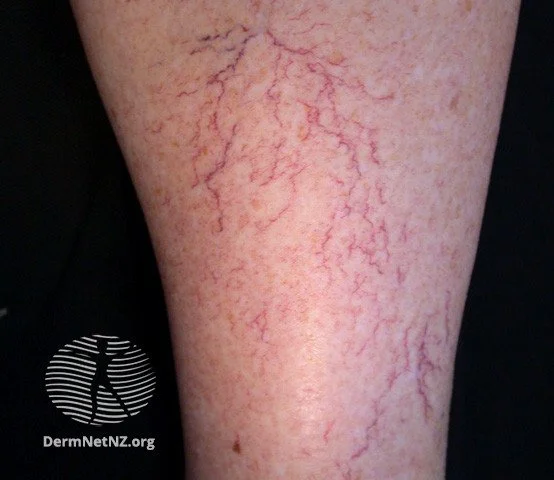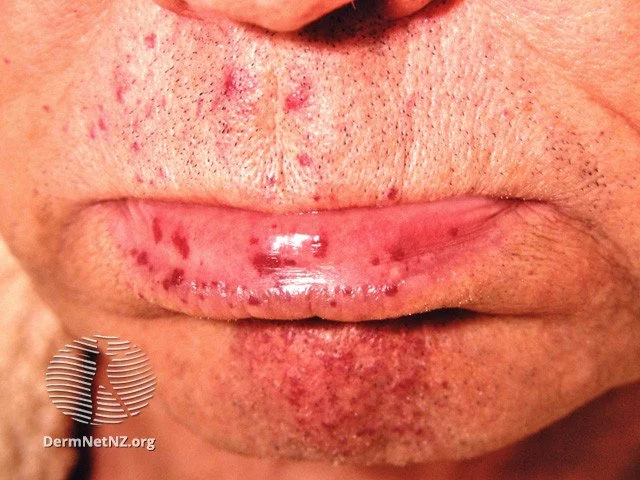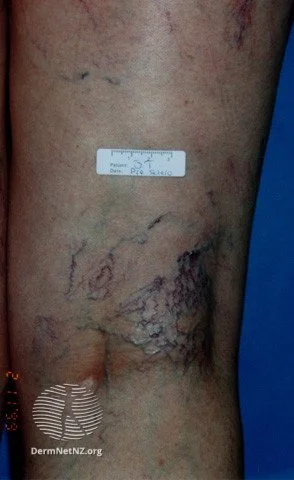
Spider Veins (Telangiectasia)
Spider veins are more common on the legs where there is gravity-dependent blood pooling.
Credit: DermNet NZ
What are spider veins?
Spider veins, medically termed telangiectasia, are tiny, superficial blood vessels that become visible on the skin or mucous membranes. They can manifest anywhere but are most prevalent on the face. While they can also appear on the legs, their presence there often suggests underlying varicose veins. Although most individuals opt for spider vein treatments due to cosmetic concerns, these veins can occasionally indicate other conditions like rosacea, liver disease, or venous disorders.
What causes spider veins?
The emergence of spider veins can be attributed to both genetic predisposition and external factors. The factors heightening the risk of developing spider veins are:
Inherited genetic tendencies
The presence of rosacea
Pregnancy
Aging
Liver disorders
Prolonged use of steroids
Physical trauma to the skin
Extended durations of sitting or standing without breaks
What are the symptoms of spider veins?
Spider veins manifest as small, visible blood vessels on the skin's surface. They may display a red, blue, or purple hue, setting them apart from varicose veins, which are notably larger and may protrude from the skin. Primarily, the appearance of these veins is the only symptom, although underlying varicose veins might cause aching sensations in the affected area.
How do I treat spider veins?
Although spider veins themselves are benign, their association with certain medical conditions might necessitate treatment. Many individuals also seek treatments for aesthetic reasons, wishing to remove or reduce the appearance of these veins. Therapeutic options encompass:
Laser therapy: Utilizes light energy to target and damage the blood vessels, causing them to fade over time.
Electrotherapy: Involves using electrical energy to damage the spider veins, which eventually fade away.
Sclerotherapy: A procedure where a solution is injected into the veins, leading them to collapse and fade.
Treatment of associated varicose veins: This might involve procedures to improve blood flow and reduce the appearance of both varicose and spider veins.
Spider veins on the face from rosacea or inherited conditions also respond well to treatment.
Credit: DermNet NZ
An example of a patient who is about to get sclerotherapy for their spider veins. This treatment does not work for deeper veins like varicose veins however.
Credit: DermNet NZ



